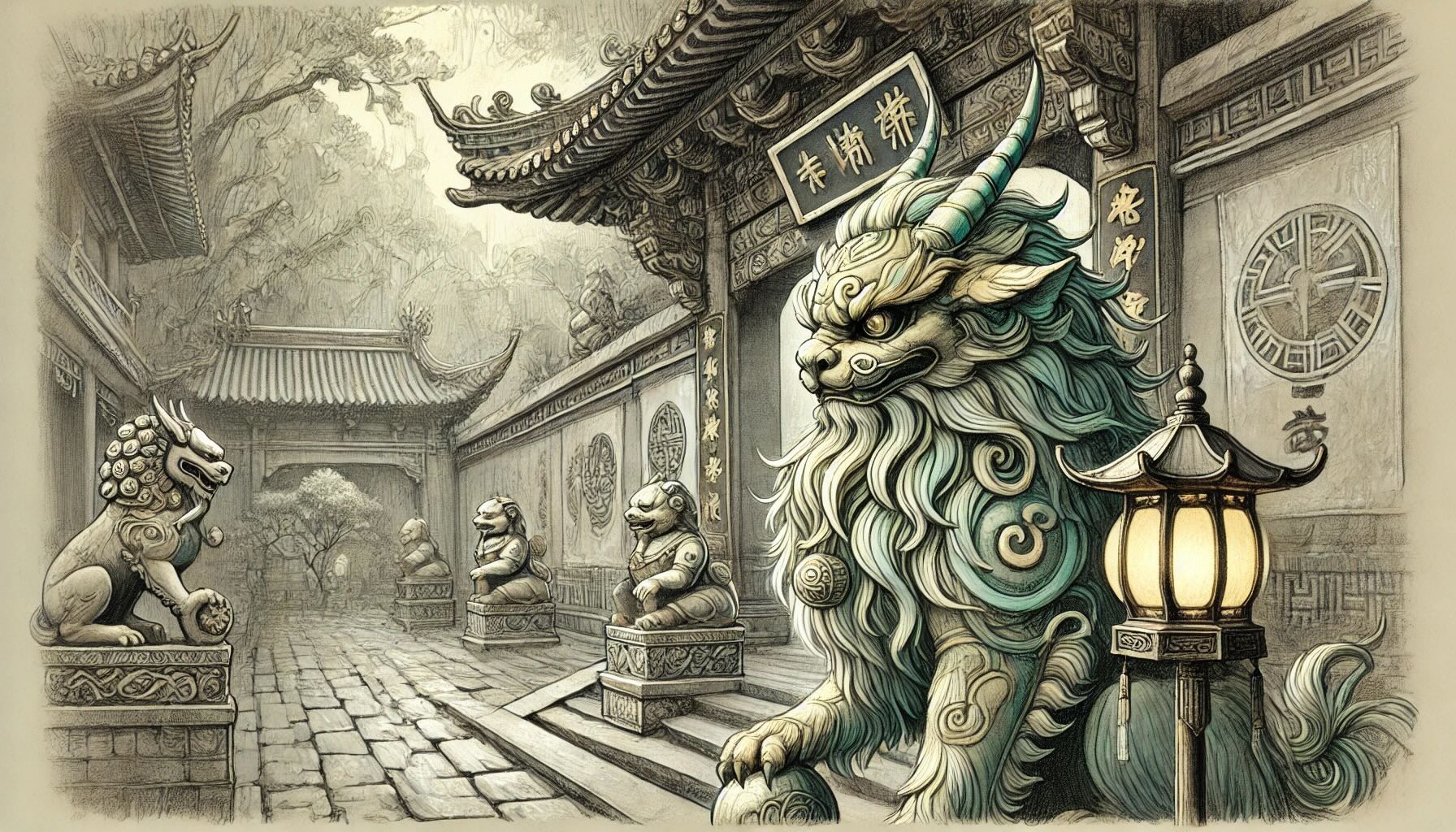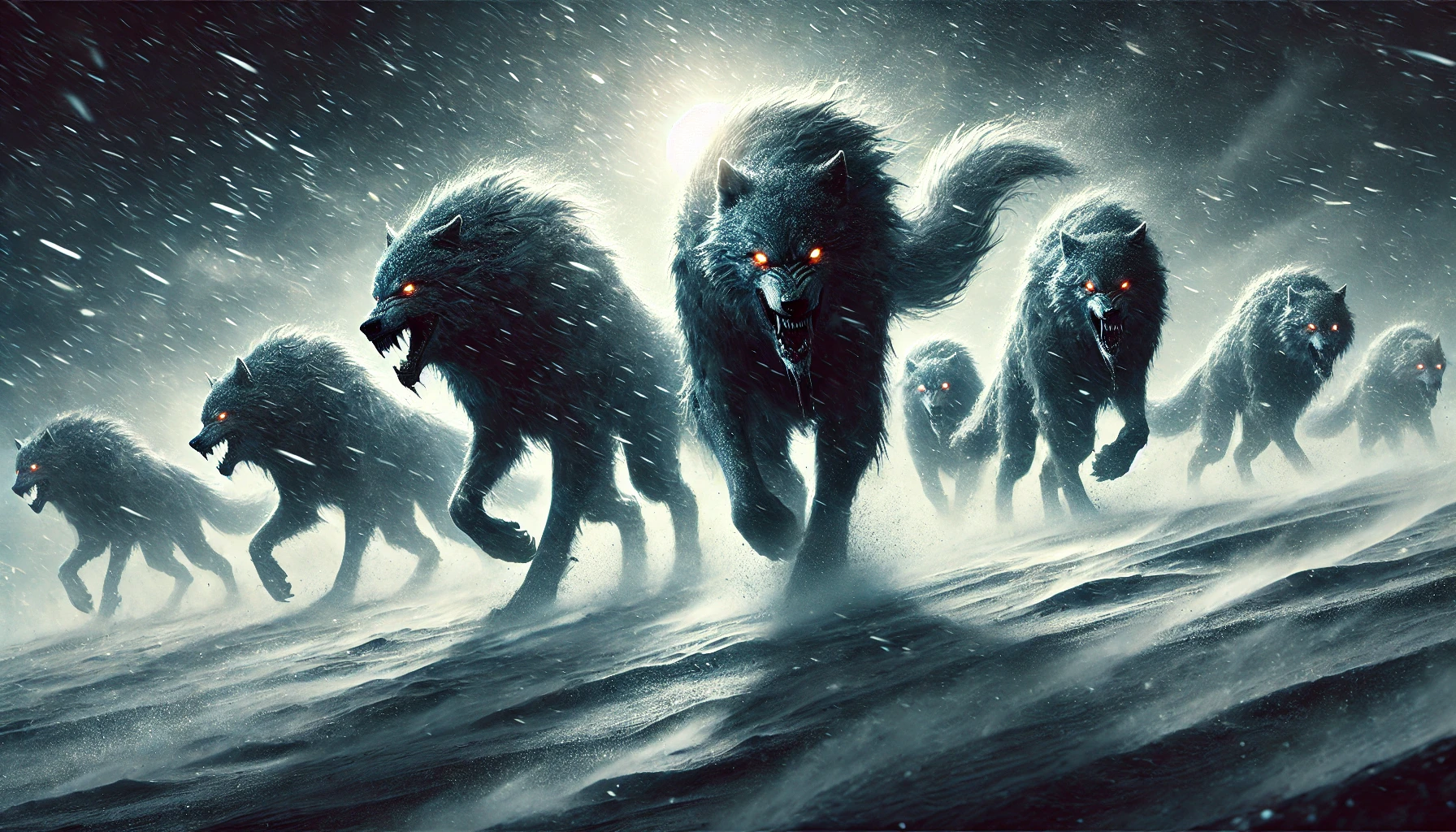Bai Ze: The All-Knowing Beast of Legends
A Page from the Beastkeeper’s Journal
The mountain air stung my face, carrying with it the faint scent of pine and frost. I pulled my coat tighter as I trudged up the rocky path, my boots slipping occasionally on patches of ice. Every so often, the sound of wind through the trees made me pause, as though something unseen was watching. Perhaps it was only the villagers’ stories echoing in my mind—or perhaps it was something more.
The Bai Ze, they said, was no ordinary creature. It appeared only to those seeking knowledge for a purpose greater than themselves. It wasn’t the kind of beast to stumble upon; its presence was deliberate, as though fate itself had to intervene. I wondered what it would think of me—an ordinary traveler armed only with curiosity and a journal.
Origins of the Bai Ze
The Bai Ze, or “White Marsh,” holds a revered place in ancient Chinese folklore. Its story begins with the legendary Yellow Emperor, Huangdi, who ruled around 2697 BCE. According to the tales, Huangdi encountered the Bai Ze while traveling near the Eastern Sea.
Unlike other mythical creatures that shun or challenge humanity, the Bai Ze approached Huangdi willingly. It shared with him its unparalleled knowledge, describing over 11,000 supernatural beings that inhabit the world and detailing their strengths, weaknesses, and ways to protect against them.
This knowledge was preserved in a text called the Bai Ze Tu, a compendium of creatures and illnesses that has since been lost to time. It is said that the Bai Ze’s wisdom allowed the emperor to protect his people from spiritual and physical threats, making it an enduring symbol of knowledge and guidance.
Journal Note:
The Bai Ze Tu fascinates me—a lost book of monsters and remedies. Was it merely folklore, or did the Bai Ze truly catalog the mysteries of the supernatural world? Did its wisdom shape the legends that followed?
A Glimpse of the Bai Ze
The Bai Ze defies the grotesque imagery often associated with mythological beasts. There are no menacing fangs or fearsome claws. Instead, it is a creature of quiet majesty. Most descriptions agree it resembles a lion or an ox, its fur as white as freshly fallen snow.
Some accounts speak of its nine eyes—set across its face and body—each capable of seeing truths hidden from ordinary sight. Others describe curved horns or an ethereal glow, like the faint light of the moon. No two accounts are entirely the same. Perhaps that is its greatest mystery: it becomes what we most need to see.
Abilities and Powers
The Bai Ze’s strength lies not in physical prowess but in its unmatched intellect. It is said to know every illness and ailment that afflicts humanity and the precise cures for each. Its wisdom spans the natural and supernatural realms, encompassing knowledge of spirits, demons, and celestial beings.
Unlike many mythical creatures, the Bai Ze is said to communicate with humans directly. Its voice is low and steady, resonating like the hum of a distant bell. But it does not offer guidance freely. Only those with pure intentions—seekers of truth rather than power—earn its wisdom.
Journal Note:
Could the Bai Ze’s knowledge extend to our ailments of the mind? Anxiety, doubt, the endless questions that plague us—what cure might it offer for these?
Encounters and Stories
Legends of the Bai Ze are few and far between, each one carrying an air of sacred mystery.
One such story speaks of a scholar who ventured into the mountains, desperate to find a cure for a plague devastating his village. Days passed, and his provisions ran low. Then, at dawn, he stumbled upon the Bai Ze in a clearing. Its white fur shimmered in the rising sun, and its many eyes seemed to study him deeply.
“Why have you wandered so far?” the Bai Ze asked, its voice low and calm.
The scholar fell to his knees, explaining the plight of his people. The Bai Ze listened in silence before revealing the cure: a tea brewed from the leaves of a rare herb growing at the base of a nearby cliff. The scholar returned to his village, saving countless lives. But when he returned to thank the Bai Ze, it was gone—leaving only faint hoofprints in the dirt, soon erased by the wind.
Cultural Significance
In ancient Chinese culture, the Bai Ze symbolized the pursuit of knowledge and the hope of bringing order to chaos. Its wisdom reflected the values of a society that sought to harmonize with the natural and spiritual worlds.
The Bai Ze’s likeness was often carved onto talismans or painted on scrolls, believed to ward off evil spirits and protect homes. Farmers and scholars alike revered it as a guardian, a beacon of clarity in a world filled with uncertainty.
Even beyond China, the Bai Ze’s influence persisted. In Japanese folklore, it is known as Hakutaku, a similarly wise and protective creature. Charms bearing its image were said to repel evil and ensure safety, bridging cultural boundaries and reinforcing the universal reverence for knowledge and balance.
A Traveler’s Encounter
As I neared the summit of Mount Kunlun, the world grew unnervingly still. The wind stopped, the trees stood silent, and all that remained was the faint crunch of snow beneath my boots. Then I saw them—hoofprints, impossibly large, pressed deep into the frozen ground. They led toward a narrow pass shrouded in mist.
I paused, my breath catching in my throat. Could it be? The thought quickened my steps, but as I followed the trail, the prints grew fainter, until they vanished entirely. The silence returned, heavier now, as if the mountain itself had secrets it refused to share.
A Final Reflection
The Bai Ze eluded me that day, but perhaps that is the point. It is not a creature meant to be captured or proven—it exists as an ideal, a reflection of our deepest hopes and questions.
The climb taught me more than I had expected. The Bai Ze is not just a figure of legend but a mirror, showing us that the pursuit of knowledge is not about certainty but about the courage to wonder. In seeking the Bai Ze, I found something else: the realization that the journey itself can hold the answers we seek.
Did You Know?
The Bai Ze’s Japanese counterpart, Hakutaku, is often depicted on charms and talismans to ward off evil spirits. This cross-cultural connection highlights the universal human desire for knowledge, protection, and harmony amidst the unknown.



